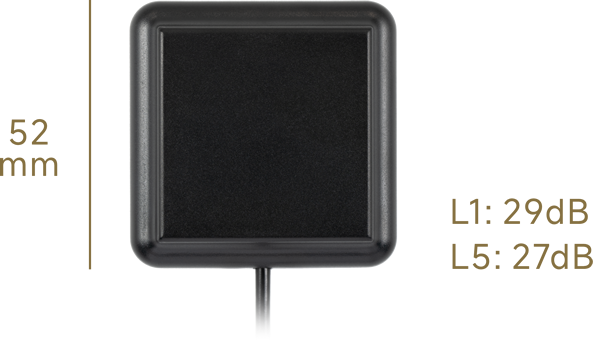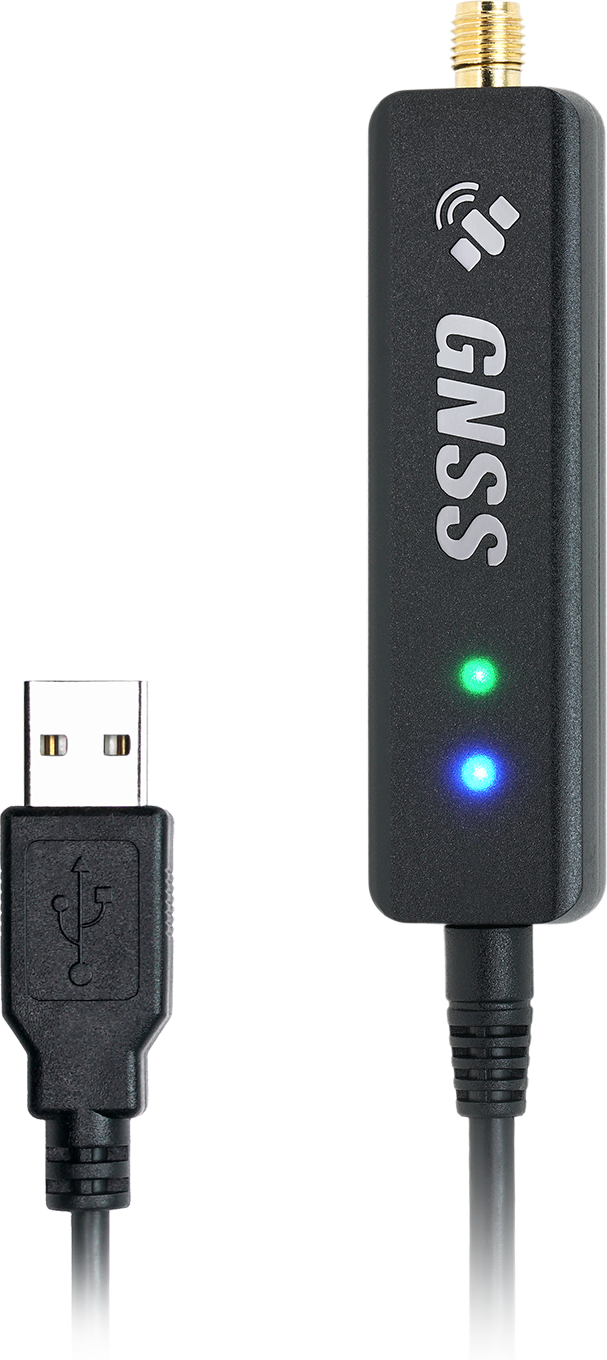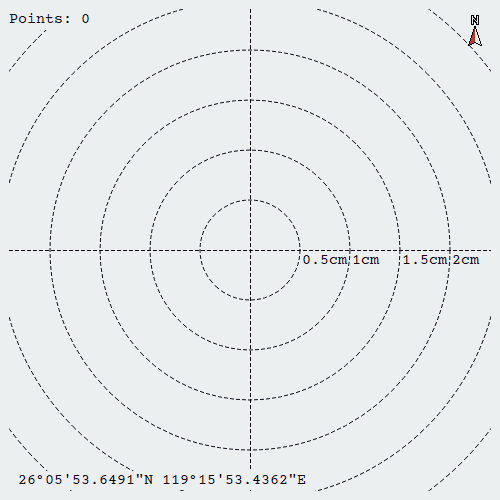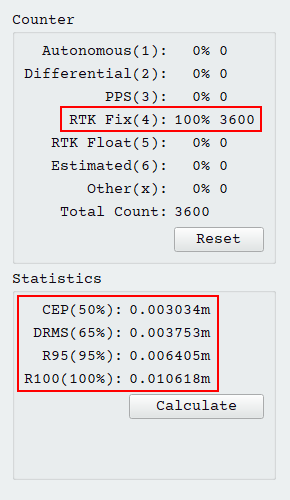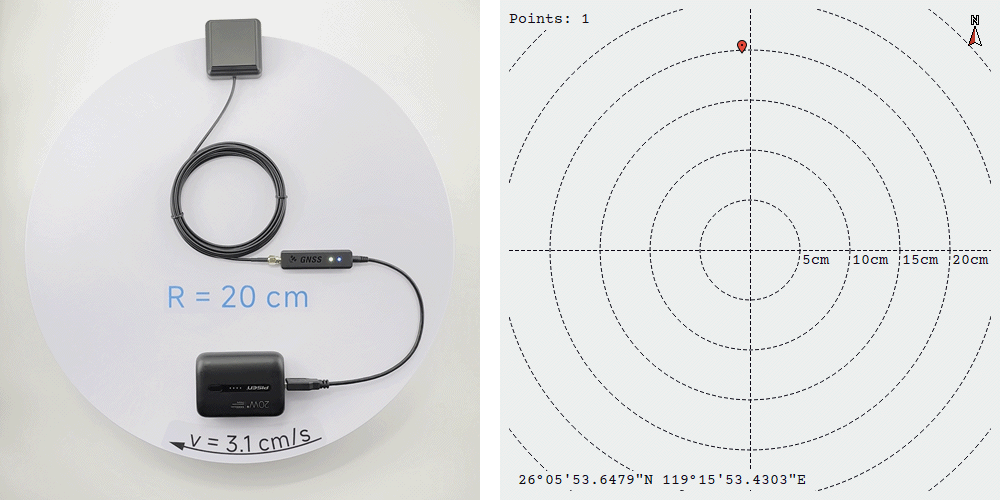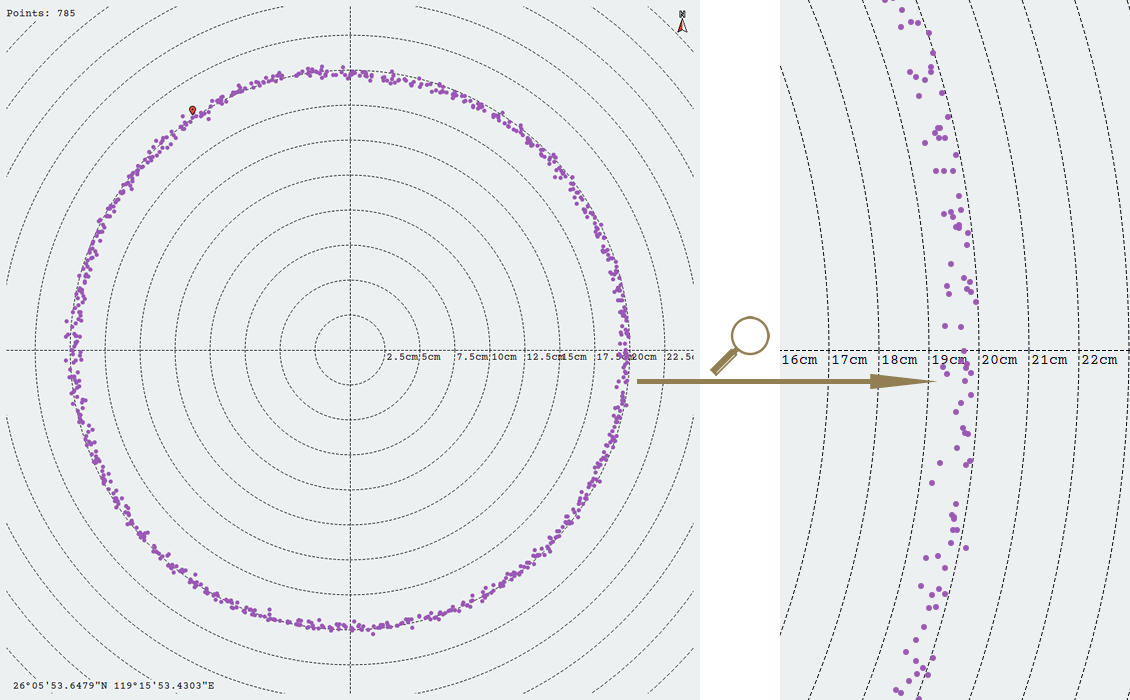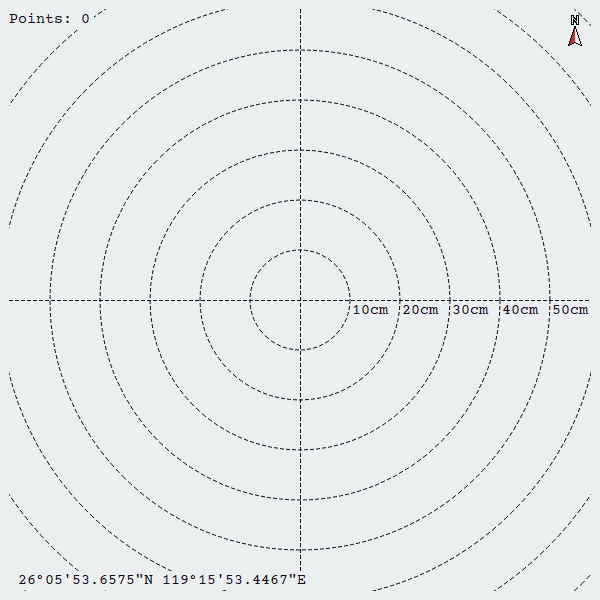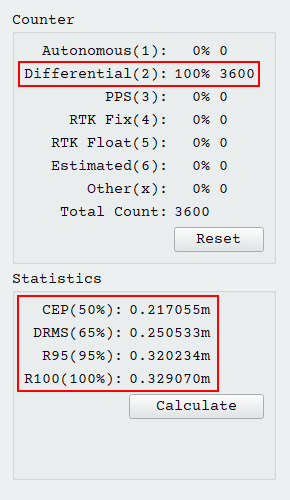|
The Advantage of Dual-Frequency
Full-Constellation
|
|
Traditional single-frequency RTK GPS receivers can only receive L1
signals from a single GPS system, often requiring over 5 minutes to
gather sufficient satellite data for RTK positioning.
The P-70 Ultra simultaneously receives L1 and L5 signals from four
satellite navigation systems, achieving centimeter-level accuracy
within seconds of initialization.
Dual-frequency reception also significantly reduces ionospheric
interference. Even without RTK service, the P-70 Ultra can still
provide positioning accuracy of up to 30 centimeters. |
 |
|
Bluetooth Channel 1
Connects to Mobile Device 1 via
Bluetooth to provide RTK correction data using a CORS
network. |
Bluetooth Channel 2
Connects to Mobile Device 2 via
Bluetooth to deliver centimeter-level data. |
Wired Channel A
Connects to a computer via USB, recognized as two
hardware-level serial ports. Channel A can be directly
accessed by Program A, ideal for data collection and
surveying. |
Wired Channel B
Connects to a computer via USB and can
be directly accessed by Program B. |
|
* Both Bluetooth channels support SPP 2.1 and BLE 5.1. All
four channels can work simultaneously for connection and
data transmission, with both Bluetooth and wired options
supporting RTK correction data delivery. |
|
|
Two Operating Modes
The P-70 Ultra supports Rover and Base
Station modes.
• Rover Mode: Connect to a CORS network via a mobile device
for 1cm accuracy.
• Base Station Mode: Connect to NTRIP via a computer to
provide centimeter-level corrections to Rover units. |
|
Replaceable Antenna Design
The P-70 Ultra comes with a high-gain magnetic antenna,
suitable for most applications. Users can also opt for a
helical antenna, ideal for aerial vehicles such as UAVs. |

|
Optional Wired Data Interfaces
Two wired data interfaces are available to suit various
applications: a standard USB Type-A port and an optional
UART 3.3V TTL interface. |

|
Field Test Performance
The P-70 Ultra demonstrates exceptional accuracy in field
tests. |
|
1. RTK Mode - Static Test
Objective: Evaluate if the P-70 Ultra's accuracy meets the
nominal value during static operation.
Duration: 1 hour | Update Rate: 1Hz | Time: UTC 2024-12-31
14:24:01 ~ 15:24:00
Method: The antenna was placed in a static position,
collecting 3600 continuous track points. The CEP value was
calculated based on the average position as the center
point.
Conditions: Rooftop with clear sky, approximately 500 meters
between the base station and the P-70 Ultra, with continuous
RTK correction data.
Click to
download the original data recorded by the P-70 Ultra>
|
Results:
• CEP(50%) accuracy was 0.3034 cm,
exceeding the nominal value of 1.0 cm. This means half of
the positioning points fall within a circle of 0.3034 cm
radius centered on the average position.
• CEP(100%) accuracy was 1.0618 cm,
also performing excellently. |
|
|
2. RTK Mode - Dynamic Stability Test
Objective: Test the positioning and
tracking accuracy of the P-70 Ultra during movement.
Duration: 785 seconds | Update Rate:
1Hz | Time: UTC 2025-01-03 14:05:55 ~ 14:18:59 | Laps: 20
Method: The antenna's phase center was
placed on the edge of a 20 cm radius disc, rotating at
approx. 40 seconds per lap with a linear speed of approx.
3.1 cm/s.
Conditions: Rooftop with clear sky.
The base station was approx. 500 m away, and RTK correction
data was continuously used.
Click to download the original data
recorded by the P-70 Ultra>
|
|
The images above (left and right) show
synchronized recordings during the test. |
|
Results:
Tracking ultra-low-speed motion is
challenging for RTK devices. In this test, the P-70 Ultra’s
track matched a 19.5 cm radius circle, with the disc radius
measured at 19.5 cm (based on the antenna phase center). The
multi-lap tracks showed high consistency, with a width of ~1
cm, demonstrating excellent performance. |
|
3. SBAS Mode - Standalone Static
Positioning Test
Objective: Evaluate the positioning
accuracy of the P-70 Ultra as a standalone receiver without
RTK correction data.
Duration: 1 hour | Update Rate: 1Hz |
Time: UTC 2024-12-30 12:40:00 ~ 2024-12-30 13:39:59
Method: The antenna was kept
stationary, recording 3600 consecutive points. The average
position was used as the center point to calculate the CEP
value.
Conditions: Rooftop with clear sky.
Differential GPS (DGPS) data was used throughout the test.
Click to download the original data
recorded by the P-70 Ultra> |
|
Results:
The CEP (50%) accuracy was 21.7055
cm, exceeding the nominal 30 cm specification, demonstrating
excellent performance. |
|
|
